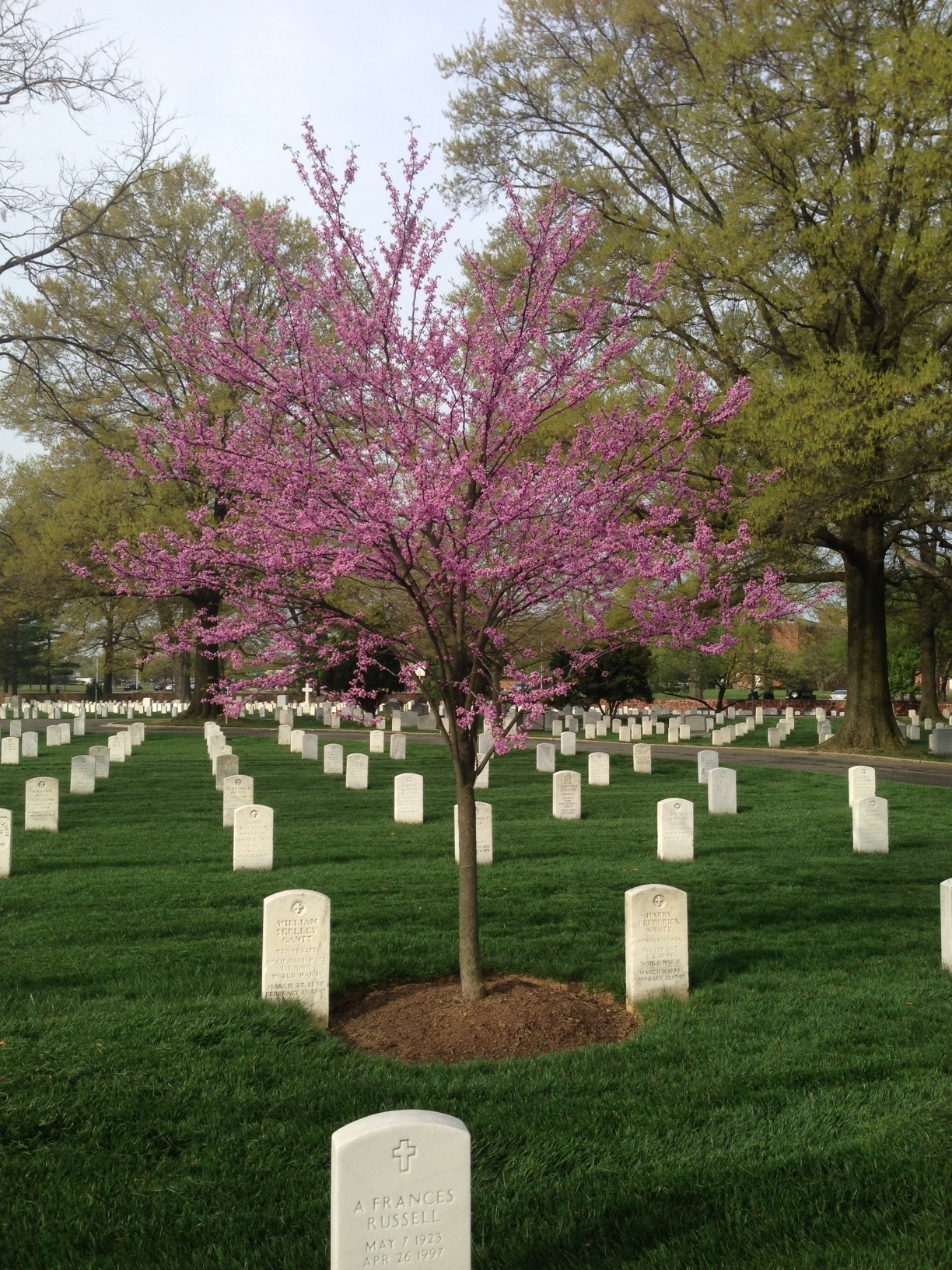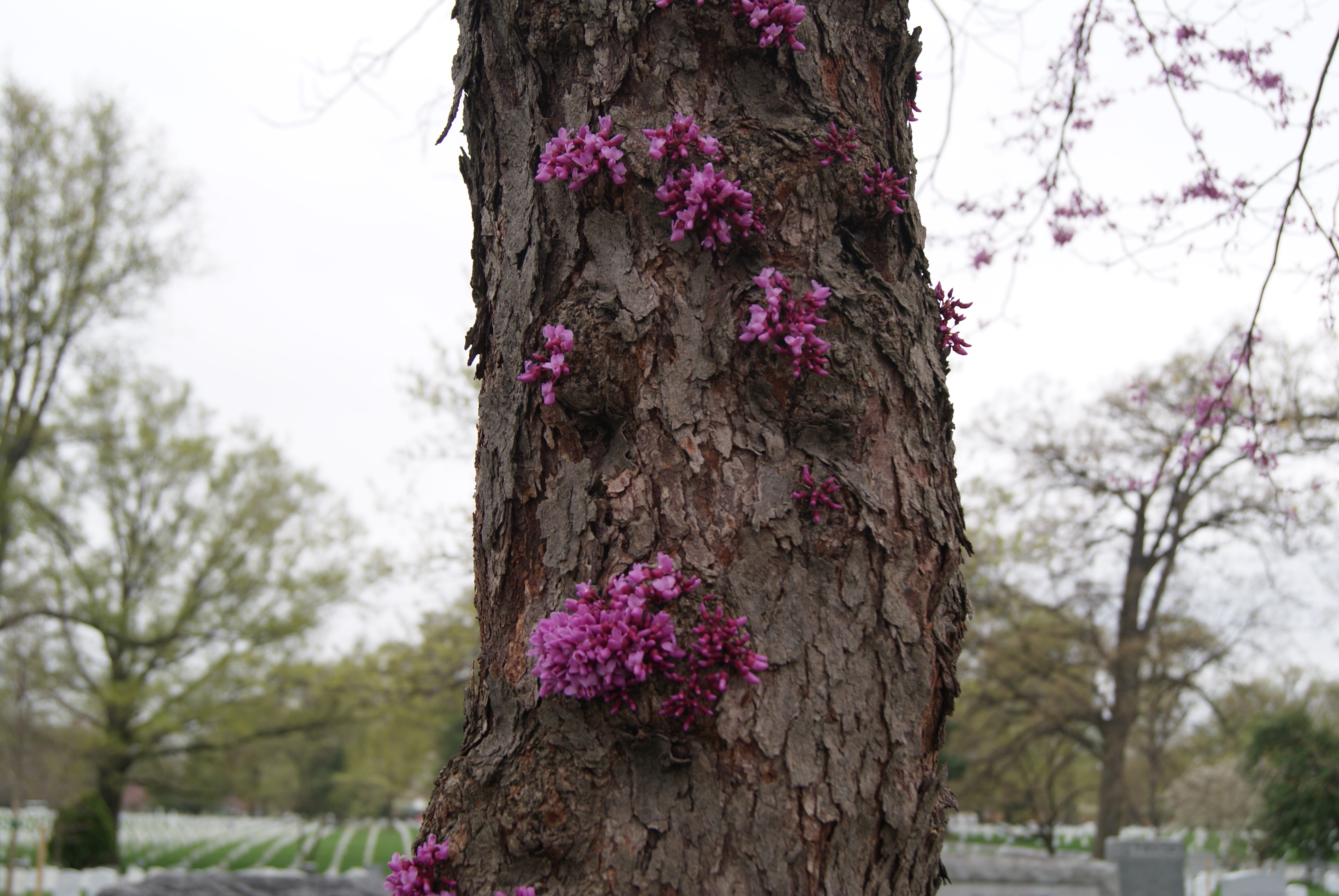 When you think of April in the Washington, D.C. area, you often think of the cherry trees surrounding the Tidal Basin. Yet the region also features beautiful native flowering trees, such as the eastern redbud (Cercis canadensis) that comes alive during the month of April.
When you think of April in the Washington, D.C. area, you often think of the cherry trees surrounding the Tidal Basin. Yet the region also features beautiful native flowering trees, such as the eastern redbud (Cercis canadensis) that comes alive during the month of April.
In early April, one can see redbuds scattered throughout the cemetery, with the largest and oldest trees located in Sections 13 and 34. It's hard to miss the pink-purple flower buds bursting directly out of the stems and bark (as opposed to the tip of the stem) — extremely uncommon in trees.
After the trees flower for about two weeks, the five-inch wide, heart-shaped leaves take center stage. Shiny purple leaves emerge in spring, but turn and stay green throughout the summer.
If those characteristics aren't enough identification hints, look for the two- to three-inch long reddish green pods. That's pod, as in legume, as in pea. Redbuds are in the Fabaceae (legume) family. By winter, just as the leaves change color, so do the pods. They turn black and hang from the trees before dropping to the ground in late winter.
The cemetery is home to roughly 165 Cercis canadensis trees. But don't be surprised to see two white flowering varieties, C. canadensis var alba and C. canadensis Texas white. The cemetery also has 24 Chinese redbud (C. chinenses) trees. Native to central China, the Chinese redbud grows to ten feet tall. Finally, look for C. "Covey," a dwarf, weeping redbud adorning the top of the retaining wall in Section 7a.
Landscaping with Cercis canadensis:
 Redbuds are ideal trees for small landscapes and as understory trees in partly shady naturalistic landscapes and woodland settings.
Redbuds are ideal trees for small landscapes and as understory trees in partly shady naturalistic landscapes and woodland settings.
They also grow well in full sun, but keep them well watered during the first year of establishment and in times of extreme drought. Be careful to keep lawn mowers away from the easily injured bark. Once stressed by an injury, redbuds host all sorts of diseases and insects.
Eastern redbuds are great pollinator plants; our native bees love them.
They are native from New Jersey to northern Florida, west to Missouri, Texas and northern Mexico.
Photos by Melissa Bohan, Arlington National Cemetery